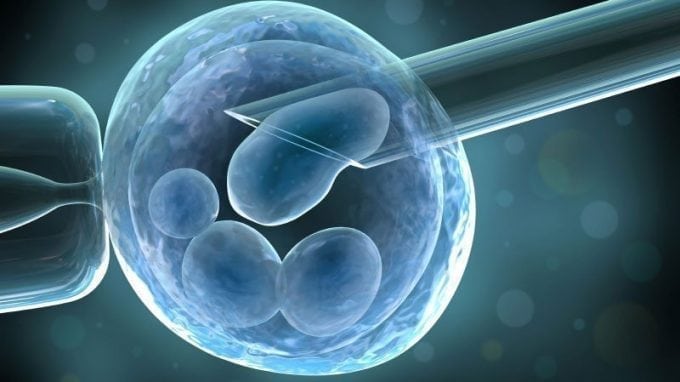In Vitro Fertilization (IVF), from the Latin vitro, meaning “glass”, involves fertilization outside of the human body. IVF is more complicated than IUI, and affects the woman more because a longer program of hormones is necessary.
What Happens During In Vitro Fertilization?
With IVF, the activity of the ovaries is suppressed. Next, the maturation of approximately 15 eggs is promoted.
During this process, the woman must inject herself for several days under the skin of her abdomen with the follicle-stimulating hormone. At the right moment, ovulation is initiated by a pregnancy hormone called human chorionic gonadotropin, or hCG. Afterwards the follicle material is harvested via the vagina. Sperm is then made available for the fertilization of the egg cells, usually from ejaculated semen, but occasionally by means of a testicular biopsy or harvesting from the epididymis using an operating microscope. Thanks to natural selection, in 50 to 70 percent of procedures, fertilization then takes place in a test tube by the most mobile sperm cells.
Several Techniques
With IVF, different supporting techniques may be used: for instance by means of pipette (Intracytoplasmic Sperm Injection, ICSI), or under the microscope (Intracytoplasmic Morphologically Selected Sperm Injection, IMSI). For women under age 35, on the second or fifth day, ideally only two fusions (embryos) will be placed in the womb after a short stay in an incubator – a practice intended to avoid pregnancies with multiples and the associated risks. Under observance of strict legal conditions, surplus egg cells can theoretically be saved frozen in liquid nitrogen. 14 Days after the withdrawal of the follicle liquid from the uterus and the subsequent fertilization, a pregnancy test can give an initial confirmation of pregnancy. However, a positive test result is only the first step; a large amount of uncertainty remains.
Legal Aspects
In the U.S., fertility hospitals and specialized centers perform approximately 126 in-vitro cycles per one million people annually, with an average cost of around $12,400 per cycle. More than 200,000 IVF babies are born worldwide each year. Health insurance companies in the U.S. may or may not cover the procedure, but even those who offer partial coverage will usually cap the number of attempts that are covered. Among additional criteria is the age limit, which is usually age 50-55.

